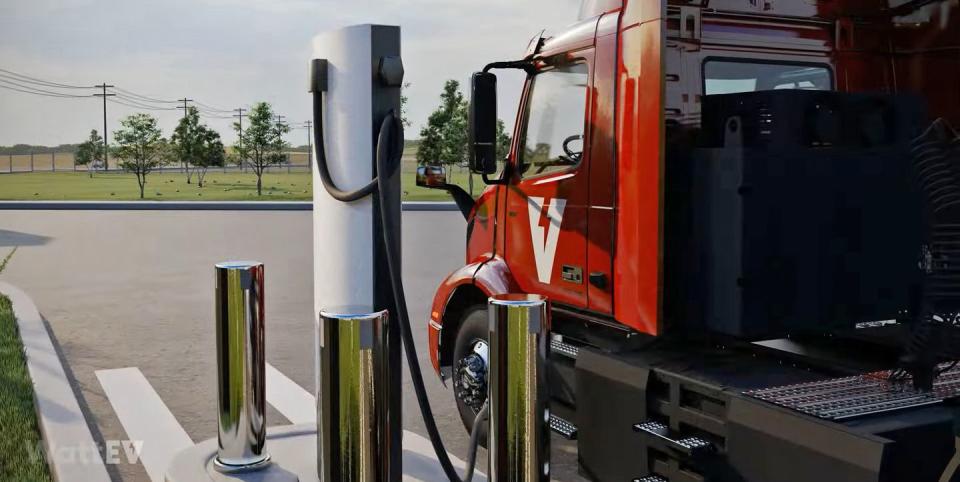The Nation’s Largest Publicly Accessible EV Truck Charging Plaza Opens for Business

WattEV opens largest publicly accessible EV truck charging depot in the country in the Port of Long Beach, California.
This new station has a total of 26 chargers, part of a regional network of truck charging locations being constructed in southern California by the company.
The city of Long Beach has made several efforts to bring zero-emissions trucking to the region, given the volume of cargo that passes through the port and the effect of traditional diesel drayage trucks on air quality.
When it comes to charging infrastructure, most of the focus over the past decades has been on establishing charging corridors along interstates for the benefit of EV owners, no matter how infrequently coast-to-coast trips for average EV owners actually happen. There are certainly some frequent fliers who do coast-to-coast trips—let's put it that way—but these corridors have also tended to allow station builders to say that cross-country trips are now possible with their networks.
But far less attention has been paid to charging infrastructure for trucks—the real frequent fliers when it comes to cross-country trips. EV charging stations, of course, are seldom conducive to positioning a semi-truck within easy reach of a charging cord, and given the small number of EV trucks in the present day, this state of affairs is quite understandable.
Until recently, we haven't really seen a large charging plaza meant exclusively for electric trucks and actually open to any truck that could just roll up.
Just what such a station could look like was revealed earlier this week at the Port of Long Beach, California, when WattEV opened its 26-stall station right on site. The port, which is the busiest in the nation, has already been the site of early EV truck charging efforts aimed at drayage operations.
WattEV's facility right next to the Pier-A terminal features 13 dual-cord chargers, rated at 360 kW each, allowing a total of 26 trucks to charge at once thanks to 5 megawatts of power served up by Southern California Edison. The charging plaza was completed in record time, and it's actually open to all electric trucks, instead of being a fleet-only station.
"There was a tremendous amount of effort that went into getting this site operational within 14 months," said WattEV co-founder and CEO Salim Youssefzadeh.
WattEV itself is developing its electric truck-as-a-service (TaaS) business model, with the aim of offering a complete ecosystem aimed at freight delivery. This business model effectively offers customers trucking solutions at a flat rate, meant to provide the same total cost of ownership for an EV truck as a diesel one.
But building up an electric truck ecosystem also means a lot of investment into infrastructure that's currently lacking at the moment, even though the Port of Long Beach has existing truck charging stalls. WattEV's station is different in that it's designed to be open to outside truck users.
And 360 kW isn't the ceiling. Megawatt charging capability for electric trucks is in the works, with the aim of allowing trucks to charge at up to 1.2 megawatts.
"We also plan to add megawatt charging at this depot, which allows pass-through trucks to be charged in 20 minutes," Youssefzadeh said.
At the moment most of the demand from EV trucks in the Port of Long Beach is aimed at drayage operations, of course, with trucks shuttling containers to warehouses relatively nearby. But the company is already starting to see demand for longer EV routes for trucks in southern California.
"WattEV has been working on opening four depots in California for the past few years," Youssefzadeh added. "The Long Beach depot was actually the last of the four to go under contract and into development, but it's the first to open!"
The company plans similar charging plazas in Bakersfield north of LA and in San Bernardino east of LA, serving warehouse districts a bit further inland. In several years, perhaps a coast-to-coast trip in an EV truck could be accomplished comfortably and with the same level of planning as in a passenger EV today.
Will we see significant numbers of regional all-electric trucks running daily routes in this decade, or will this process take longer? Let us know what you think.

 Yahoo Autos
Yahoo Autos 